Clematis are curly lianas that gardeners are often used to decorate the arbors, the facade of the house or fence. Flowers have many species and varieties. The most popular view of Clematis is the Snow Queen. It has large white inflorescences, it blooms abundantly 2 times a year and is completely unpretentious in care.
Clematis Snow Queen - Culture Description
These Clematis belongs to early grades with large flowers. For the first time, the species was led in New Zealand, then the local breeders were adapted for our latitudes. Lian height can reach from 2 to 3 meters depending on the conditions of cultivation and climate.
The inflorescences are large, in diameter range from 15 to 20 cm. The flower petals have a white tinge with a light purple spraying and enter each other in the bud, the edge corrugated. In the center there is a large number of stamens. Their color at the base is green, and the tops have brightly raspberry color.
A distinctive feature of Clematis variety Snow Queen is not only a large bud, but the frequency of flowering - 2 times a year. The first time Clematis bloom in late May - early June and have abundant flowering. The second period falls on August and mid-September. At this time, Liana foliage acquires a rich-green color.
Frost resistance at the variety is high enough, liana can withstand without covered frost to -20 degrees. For the northern regions, shelter is required for wintering. Thanks to this ability, the snow queen can be grown throughout Russia.
Clematis grade is suitable for growing in open ground and landing in containers or large vases. Liana can be decorated with a gazebo, terrace, as well as a fence or make an artificial fence. Damp swelling or facades are best suited because of the snow-white colors.
Clematis Snow Queen - landing rules
Places for growing clematis are diverse. For abundant flowering, preserving the brightness of petals and full development of Liana Choose solar places in the garden. The plant feels well in half the same. Plots for landing should be necessarily protected from wind and drafts. This is a prerequisite, since the inflorescences near the snow queen is massive, and the twigs are thin and under the impulse of the wind they can break down.
Important! When boarding Clematis near the walls of the buildings, make sure that the water from the roofs after the rain do not drip.
When choosing a soil for planting a snow queense, prefer loose and light soils. Clematis do not like acidified land, so to reduce it during the landing, mix the soil with chalk or use it as a drainage.
If you have loam, then add river sand into the landing ground at the rate of: two parts of the soil use 1 part of the sand into two parts. For clay soil, mix the sand in equal proportions. Such an action will increase the grounding of the soil. This will allow water to get absorbed faster, and the air calmly circulate around the root system of the plant.
Also avoid lowlands in the garden or close to groundwater. Clematis do not like stagnation of water, which can lead to a field of liana or plant damage to fungal diseases.
To avoid excessive soil moisturizing, fall out of Clematis seedlings on a small elevation or create an artificial hill yourself. In the presence of clay soil around the landing pit, take care of the drainage system. Drop a few grooves for which the excess water will flock.
Lunka for landing should be prepared in advance, 2 months before seeding. First, the soil is reappearing twice, at the same time removing the remains of previous plants and weeds. Drop a hole with a depth of about 70 cm. And a diameter of 50 cm. The distance between the wells should not be less than 70 cm. To ensure liane growth.
- Landing soil Mix with organic fertilizers (well suited by overworked), river sand and haired lime. So on 2 parts of the soil, add 1 part of the humor, 1 part of the sand and 100 g. It is allowed to use ash.
- At the bottom of the landing well to put drainage with a thickness of at least 10 cm. If the soil is acidic, then you can use the cheat chalk. Shot to cover the film and leave alone until the landing. Saplings are planted in early May.
- With autumn planting, sprouts should be planted in September, so that the root system of Liana managed to grow to winter, but at the same time it did not have time to increase the mass. Otherwise, Clematis will not postpone the wintering. If you have purchased seedlings in the late autumn, then leave their landing until spring, otherwise they will not be able to overvalue.
- Put the strongest seedlings for planting. An hour before the landing, soak the roots of the sprouts in a weak solution of manganese. At the bottom of the landing well (Ichno drainage), push the soil in the shape of a small slide.
- Seedling put vertically into a hole, scatter tips on the tubercle. At the same time, the root neck of the sprout and the first kidney series should be under the surface of the soil. This grade of Clematis should be very deepened when landing. Such a technology will stimulate the bushithosity of the lianas and increase the resistance of the plant to disease.
- Put the ground around the trunk, lose the soil slightly. Make sure that there is no emptiness. Be sure to form the edge of the well. So moisture will not flow during irrigation. After planting, Pouring Lian with warm water.
In the first year of growth, the Snow Queen develops slowly, and the twigs will remain thin for a long time. Such growth is the norm for this variety of Clematis. Decorative culture will fully show itself only after 2-3 years.
Clematis Snow Queen - Care Rules
Upon compliance with the small rules of culture care, you will save the plant healthy, and provide Liana abundant flowering. Clematis care is to comply with the frequency of watering, timely making feeding, proper trimming and hanging of Liana, preparation for wintering, loosening, as well as the struggle with weeds and pests.
Clematis Rules Snow Queen
Clematis variety Snow Queen, like the other types of culture, love moisture. But it is necessary to avoid stagnation of liquid, otherwise not to avoid fungal diseases on Liana. Therefore, the regularity of Clematis irrigation should be 1 time per week. If a hot summer was outlined, then increase the frequency of watering to 2, and then 3 times a week. At the same time, the soil must be all the time moistened, but not raw.
Try to pour out the entire amount of water immediately, as Clematis does not like frequent irrigation, especially small portions. The soil must grow deeply. To ensure such watering, cut off a wide pipe 50-60 cm long, make several holes and insert several pieces around the liana. Water will fill the pipe and gradually feed the moisture plant.
For seedlings or Lian in the first 2 years there will be enough water buckets for watering at a time. For adult plants, increase the amount of water to 2-4 buckets. Make sure that the liquid during watering does not touch the main stalk of the Liana, it is best to water the plant manually.
With a protracted rain, watering reduce or even stop. After each watering or rain, it is necessary to carry out soil looser and at the same time remove weed plants. This procedure will contribute to the best air circulation for the root system, the crust will not be formed on the surface of the soil. After loosening, sprinkle the trunk of the plant ashes to avoid fungal diseases in excessive moisture.
Advice! To reduce the frequency of watering and not to carry out soil, inspirate the ground around the plant with a small bark of the tree, peat or moss. In addition, weeds will not grow on the mulch.
Clementing Clematis Snow Queen
In the first year after planting seedlings, the spring and summer feeding is not required, since fertilizers were introduced when landing. During this period, add drugs only in the fall for rooting the lianas and preparation for wintering.
It is important to remember the main rule of making feeding. So in the spring, nitrogen-containing drugs are required to ensure the growth of greenery, in the summer, potash fertilizers to maintain the formation of buds and blossoms of Clematis, the autumn requires feeders only on the basis of phosphorus and potassium to maintain the plant after flowering and prepare for winter.
Feed Clematis follows 2 times every month. This requires the introduction of liquid fertilizers, can be combined with irrigation or add bait after it. Use small portions of fertilizers.
In the spring period it is necessary to support Lian to ensure the growth of new shoots. To do this, use an ammonium salter in the amount of 20 g. For every 10 liters. water. You can also make an organicity: 1 part of chicken litter on 15 parts of water or 1 part of a cowboat on 10 parts of the liquid. Water for breeding fertilizer should be warm. The bait should be made at the rate of 1 bucket of the finished solution on 1 adult bush.
Until the appearance of buds, mineral fertilizers with organic additives are recommended. In the summer months during the flowering period, strong feeders are not needed, since it is necessary to leave the plant alone.
It will be enough once a month to water the solution of manganese (2-3 g. On bucket of water) or breed 1-2 born acid for 10 liters. liquids. In addition to making solutions in the summer, you need to perform a spraying of urea lianas. For the preparation of the solution you will need half the art. l. Powder on water bucket.
Since Clematis varieties Snow Queen form buds 2 times over the season, autumn feeding should be made after Liana will flash the second time. During this period, fertilizers are required to activate the aging of shoots and fruits. You can use the finished mixtures of the feeding type "Autumn" or "Kemira Autumn". Do not forget to dilute their wood ash.
Before wintering, use feeders with the addition of potassium sulfate. Use 10-30 drugs for each square meter. In the autumn period, the soil resistance is required around Liana. At this point, you can wash the superphosphate in the granules. Add no more than 50 yards per square meter.
Loosening and combating the weeds of Clematis Snow Queen
Do not neglect the looping procedure. It will make the top layer of soil loose, which will allow moisture to get absorbed faster, and the air calmly circulate and feed the root system with oxygen.
For loosening, use a garden inventory with small but frequent teeth. It is not recommended too deeply to lower it, as you can damage the roots. Conduct soil looser as often as possible, especially after rain or irrigation.
Deleting weeds is not only a cosmetic procedure for beauty in the garden, but also the need. First of all, weed plants take part of the useful elements in Liana, because of which Clematis cannot be fully developed. In addition, weeds can carry diseases. It is necessary to pull them out with the root and do it is necessary until the ripening of seeds from weeds.
Do you need a support for Clematis Snow Queen?
Clematis grade Snow Queen requires help in the direction of Lian growth. If this is not done, then flexible shoots will be removed with each other, which will lead to the death of the plant and buds.
Each spring is required to tie the Lian to the support in the desired direction. It is mistaken to believe that the garter is needed only by young seedlings. Adult plants produce young shoots that should also be tied and form the necessary drawing or view.
You can find ready-made supports of various types. It may be arches, pyramids, designs in the form of a fan or just smooth ladies. When choosing one or another type of support, give preference to durable structures, since Liana Clematis is severe, support is particularly required by booton.
You can independently make a support, for example, made of metal mesh. Cut a small length, turn in the form of a cone or cylinder, fix the edges. Position the design on top of the young Clematis bush and tie shoots. Over time, Liana will grow around the support.
Important! Fastening the stalks of the plant can only with a thickness of at least 1 cm in diameter.
Clematis Snow Queen - Pruning Features
Clematis trimming is needed not only to give the aesthetics cungage, but also to preserve the health of the plant. The first procedure is carried out when landing for the formation of the shape of the crown and better rooting of the seedling. Then the pruning is necessary in the spring period to remove damaged stems after wintering.
During the trimming, it is important to take into account which group includes one or another type of Clematis. The snow queen requires pruning for the second group. This Liana grade blooms 2 times over the season, while the first buds appear on old shoots, but the second stage of flowering occurs already on new sprouts. Therefore, it is important to adhere to the rules of trimming Clematis of the second group so as not to lose the flowering of Liana.
In the first year after planting seedlings, trimming of all stems at the level of 30 cm is required. From the surface. This will further contribute to the active growth of Lian and better branching. In the second and subsequent years of growing pruning is carried out strictly according to the following scheme.
For the season, the first formation trimming is carried out only after the flowering of Clematis. During this period, the shoots should be trimmed with buds that have already been bold. As a result of such actions, the second bloom will be lush and abundant. If you do not hold such a trimming, the second period of flowering in Liana may not come or will pass with small and weak buds.
After Liana fires the second time, the next stage of forming trimming is carried out. Now Liana is cut completely at an altitude of 1 m. From the surface. In this case, the shelter of the plant for the winter is required.
Clematis groups 2 trimming groups have another distinctive feature. Once in 5-6 years, severe trimming before wintering is carried out. As a result, the next year of abundant flowering will not be, but subsequent years, Clematis will delight you with their major inflorescences and healthy Liana.
Important! If you do not carry out a complete trimming of a bush every 5 years, then the stalk of Liana gradually bargains. This will lead to a decrease in branchiness and poor formation of inflorescences.
Clematis Snow Queen - Shelter for the Winter
Despite the fact that the snow queen belongs to the frost-resistant varieties of Clematis, it needs to be prepared and shelted for the winter, especially for growing in the northern regions. After autumn trimming, it is necessary to remove all the leaves from the Lian and untie the support.
The soil under the bush is drunk, both fertilizer is introduced at the same time according to the rules of Clematis feeding rules. In this case, the effects of drugs should be aimed at strengthening the root system, and not ensure the growth of the ground part of the bush. Favoring leaves and remnants of plants are removed from the soil.
Before wintering, be sure to treat the nodes of the body ashes and sprinkle with a mixture of ash, charcoal and sand. Around the stem, make an embankment with a height of 30 cm. Then mix the river sand with ash in the ratio: on 1 sand bucket added 250 g. Put the mixture around the liana stem. This will allow the underground part of the bush not to fade in winter.
The branches are neatly folded along the spirals and stacked on the ground. If you have warm winters, then it will be enough to cover Lian Napnik or sawdust. You can also use fir branches. In the presence of strong frosts, it is additionally required to cover Clematis spunbond or other underfloor material.
Do not use the film to cover. It is important that you leave a place to air, thereby creating a layer between the sweetheart and the observer material. It will additionally save the plant from frosts and will not give the roots to recreat.
Important! The first 2 years of growth of Clematis seedlings requires a mandatory shelter to wintering, regardless of the region and the power of frost. Young sprouts may not be transferred even small frosts.
Clematis Snow Queen - Spring Awakening
In the spring, do not hurry to open the plant. Clematis are afraid of spring frosts and bright sunlight, which can burn young kidneys. It is necessary to open the bush in the period when warm weather is installed, without night frosts.
The wake-up procedure should take over cloudy weather. Carefully remove the observed material, remove the sawdust and filming the mound. Inspect the shoots. If there are damaged branches, then cut them under the root.
Be sure to braid the soil around the Lian and make nitrogen fertilizers. Use 40 g. Funds for 10 liters. water. Water the bush only with a warm solution. In the presence of sour soil at the same time with fertilizers, make a lime milk. For each square meter, it is necessary to prepare a solution of 10 liters. Water and 200 g. Subsequent watering takes 1 time in 10-14 days, then gradually reduce the periodicity of soil moisture.
Clematis Snow Queen - Photo in the Garden
Clematis sorts of the Snow Queen can grow at home in the site, even a newcomer, because the care of Liana will not be much difficulty. If you observe simple rules for planting and leaving the plant, then you can admire the beauty of snow-white buds for a long time.
Clematis Snow Queen - reproduction of stalling, video
Clematis Snow Queen - Gardening Reviews
Tatiana, 50 years old:
"Put the snow queen 4 years ago. Every winter sheltered sawdust. Especially I do not care for Clematis, I will follow the soil to be wet and breaking the weeds. Each new season flowers and foliage becomes larger. In one year, the buds did not cut off after the first flowering, so the second time for the season the flowers were very small. From fertilizers I use only the organic in the spring and summer. In the fall, I do not feed at all, the fertilizer's bulk, just before hiding on the wintering. "
Sergey, 62 years:
"Wife very much like Clematis, decided to breed a snow queen. The liana is fully justified by its name - large flowers of snow-white color, and also flowers a bush 2 times a year. In the first year, Saplings landed in a half - in the morning a shadow, and after lunch the sun. Clematis developed very badly, in the second year did not even bloom at the end of summer. Pereavilled him to a sunny place, added sand and sat down ash. A bush has taken place in a new place quickly, the flowers became larger and the foliage is more green. So I recommend landing Lian on the sunny plot. "
Elena, 42 years old:
"The Snow Queen is my favorite among the other varieties of Clematis. The sun grows very quickly, but taking into account the regular irrigation. I planted Liana near the fence, tied ordinary twine, so the twigs themselves began to deteriorate on him, did not even lift. In one year there were plentiful rains, did not braid the soil on time, the fungus appeared on the stem. I had to dig a bush completely. The next year, the soil of finely chopped bark was clicked. Now there are no problems with the problem of excessive moistening of the Earth, and the weeds do not grow at all. "

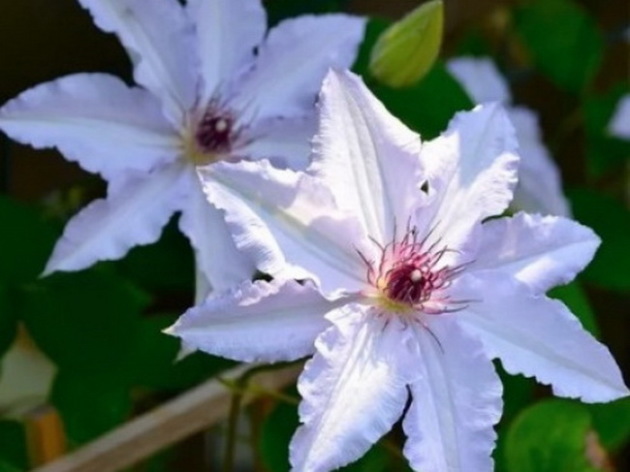
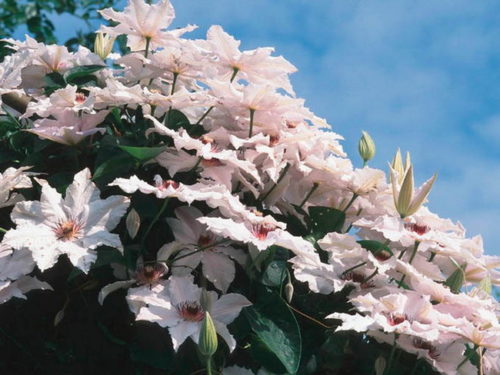
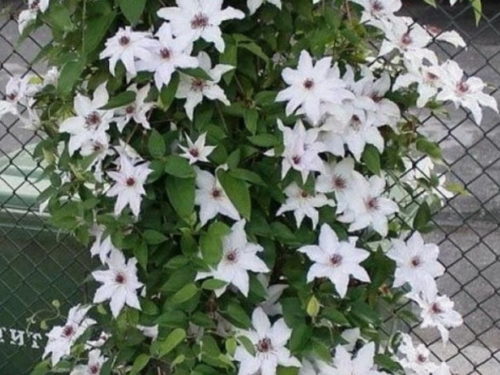
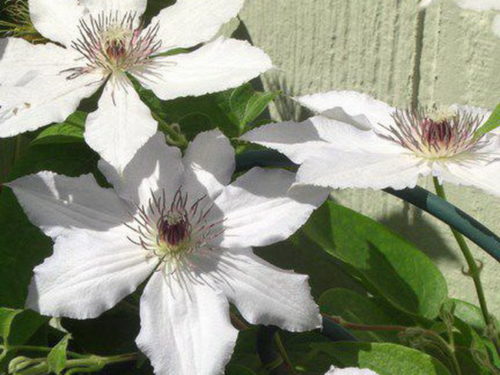
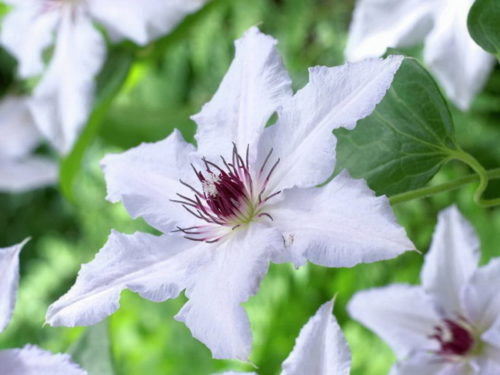
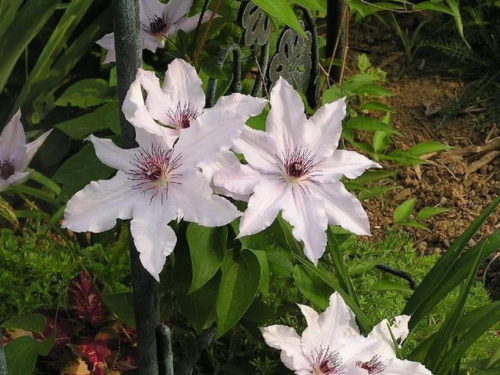
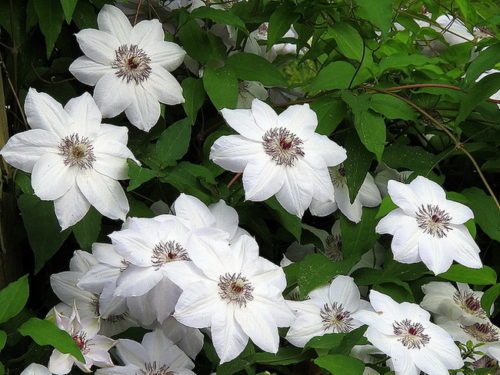
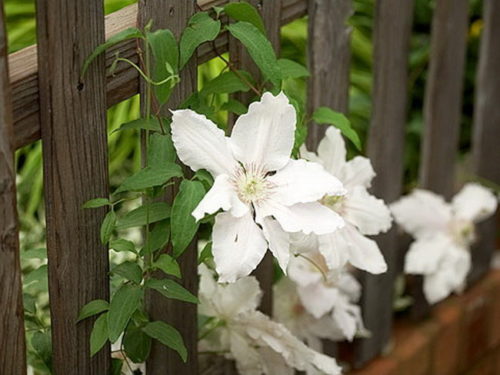
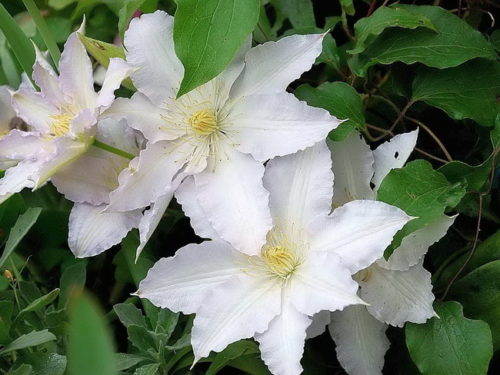
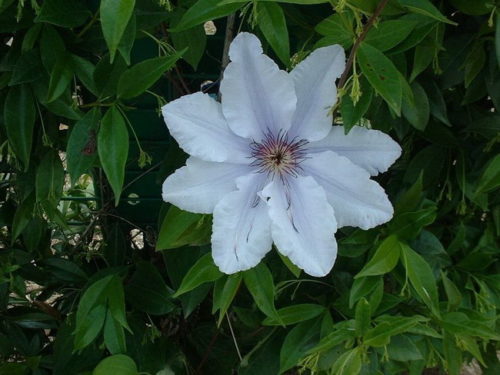

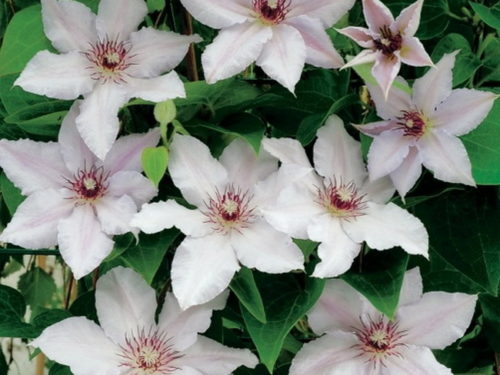

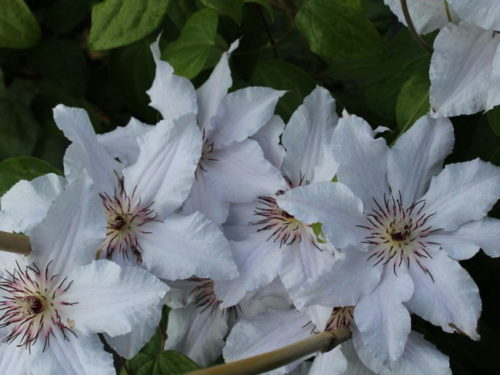
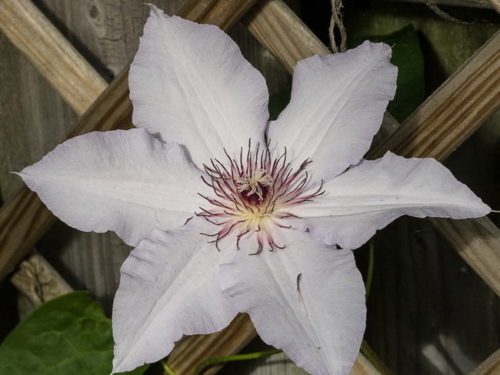

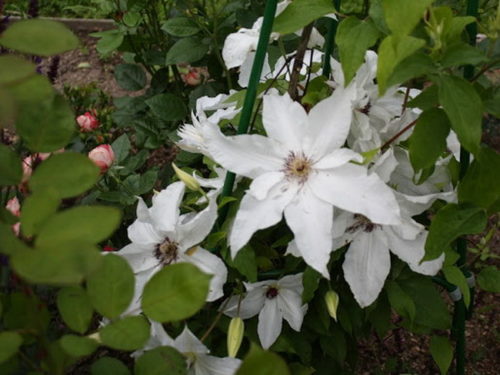
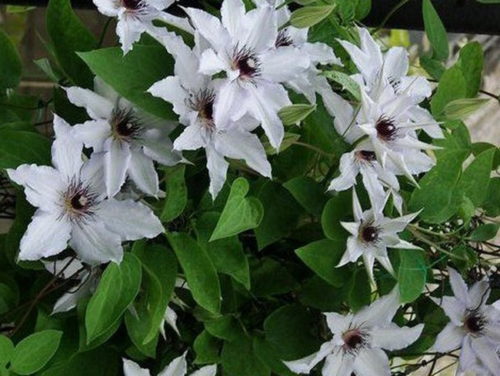
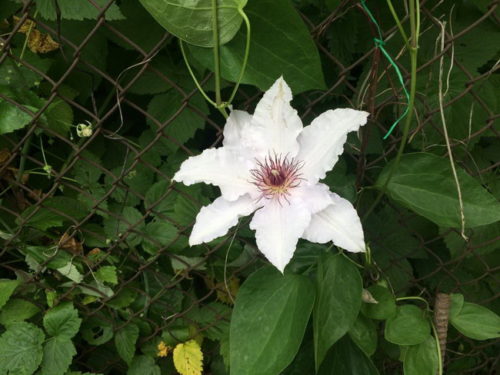
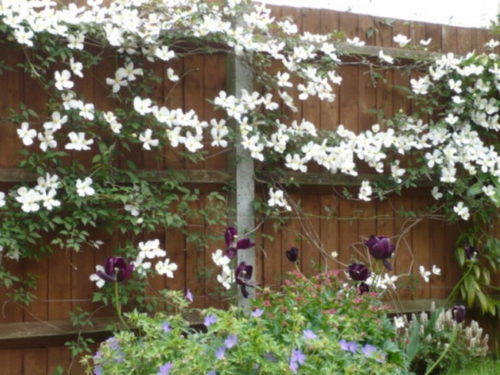













 Start a discussion ...
Start a discussion ...